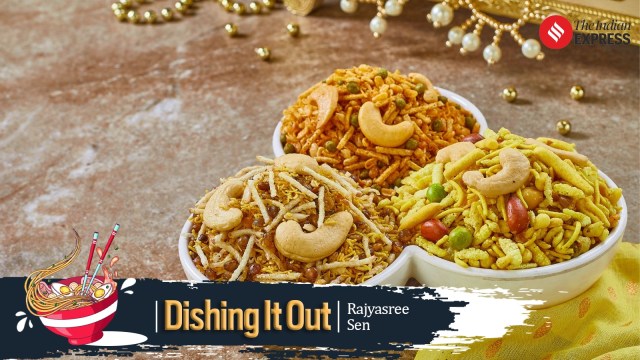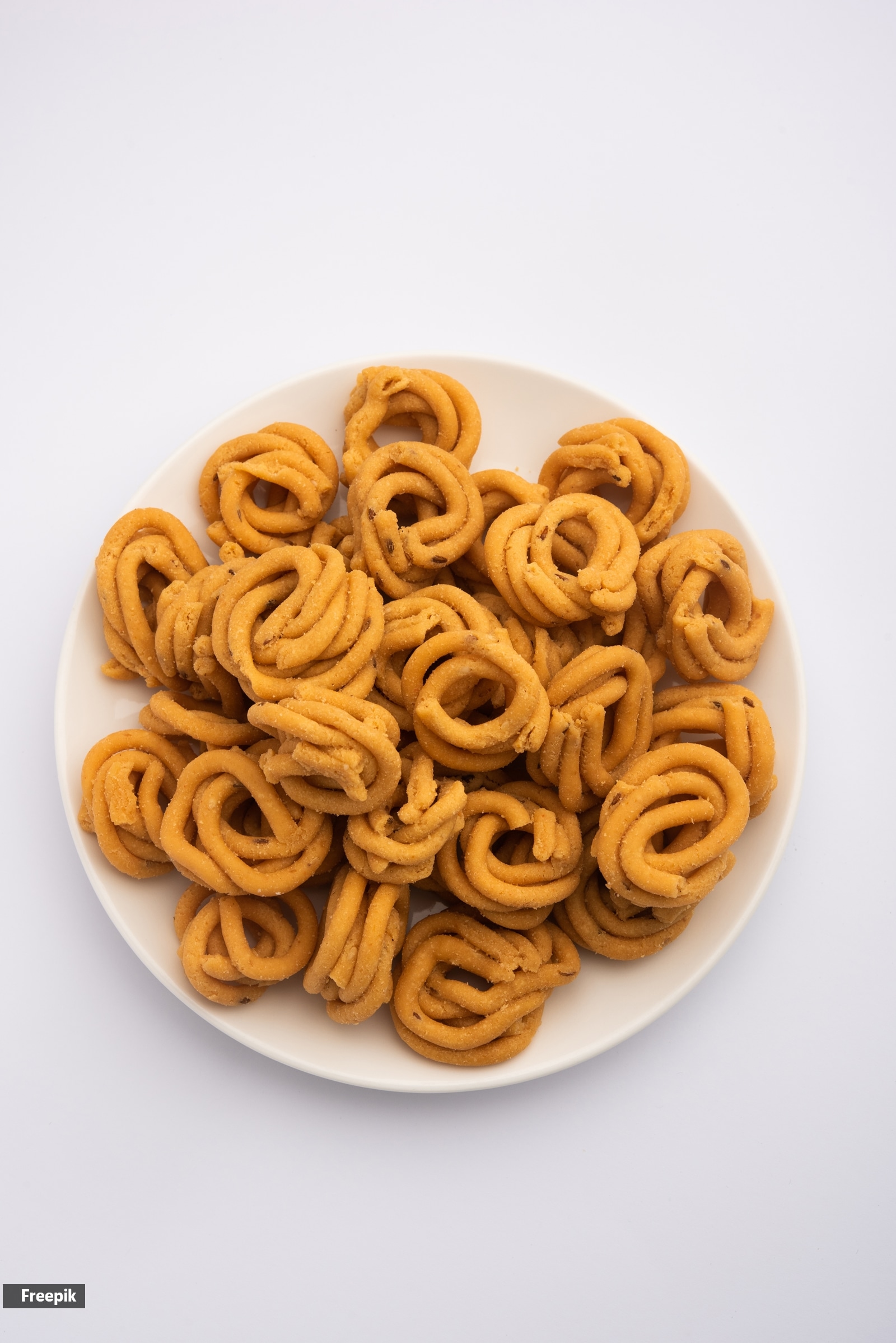📣 For more lifestyle news, click here to join our WhatsApp Channel and also follow us on Instagram
The great Indian namkeen trail: Why fafda, murukku, and dalmoth beat any packaged snack
Beyond sweets, India’s true snacking soul lies in its crispy, savoury creations passed down through generations.
 We often rave about Indian sweets, but our savoury namkeen— salty, ready-to-eat snacks — are a world of their own. (Photo: Canva Pro)
We often rave about Indian sweets, but our savoury namkeen— salty, ready-to-eat snacks — are a world of their own. (Photo: Canva Pro)One of the many memories of school is the tiffin boxes classmates brought. My lunch was usually homemade by my mother or our cook — fairly fancy, now that I think about it — chicken patties made with mum’s puff pastry, cheese straws, sandwiches. But my eye was always on my Gujarati classmate’s tiffin. Pure vegetarian, yet bursting with flavour. Her box was a treasure chest of snacks — tri-coloured sandwiches layered with mashed potatoes, green chutney and red chutney, or crisp, spicy bondas. Only later did I realise her tiffin represented what Gujarati cuisine does best — farsan, or savoury snacks.
We often rave about Indian sweets, but our savoury namkeen— salty, ready-to-eat snacks — are a world of their own. These fried, non-sweet bites are staples in most homes, tucked away in jars and ready to be served straight away, much like cheese straws or roasted peanuts elsewhere.
My favourite Gujarati snack is fafda. I can polish off a packet in one go. Made with chickpea flour (besan), flavoured with carom seeds (ajwain) and black pepper, the dough is flattened, cut into long rectangles, and deep-fried until crisp. Not healthy, but delicious.
Next up is the Bengali nimki — or namak para in North India. It’s my go-to tea-time snack. In Bengal, nimki is triangular and larger than its North Indian cousin. The dough — made of flour, ghee, nigella seeds (kalonji), salt and ajwain — is deep-fried to a golden crunch. Have it with a cup of strong ginger tea, and you’ll understand its appeal.
From the south comes murukku, Tamil Nadu’s answer to nimki. The name comes from the Tamil word for “twisted,” referring to its beautiful spiral shape. Made from rice flour, urad dal, and spices, it’s a light, crisp snack — perfect for a midday craving.
Then there’s mathri (or mathi), Rajasthan’s flaky, biscuit-like delight. Made from flour, semolina, and ghee, and flavoured with ajwain, kasuri methi and cumin, mathri is best enjoyed plain or with pickle.
 From the south comes murukku, Tamil Nadu’s answer to nimki. The name comes from the Tamil word for “twisted,” referring to its beautiful spiral shape. (Photo: Freepik)
From the south comes murukku, Tamil Nadu’s answer to nimki. The name comes from the Tamil word for “twisted,” referring to its beautiful spiral shape. (Photo: Freepik)
But my all-time favourite remains chanachur — or Bombay mixas it’s known abroad. It’s a spicy mix of fried lentils, peanuts, sev, chickpeas, and curry leaves, often served in a paper cone by street vendors. Chorafali, another Gujarati favourite, is a Navratri and Diwali special, made with gram flour and urad dal, spiced with amchur and chilli powder, and deep-fried into thin, crunchy strips.
For a lighter option, there’s chevdo (or chivda) — made with roasted flattened rice, lentils, cashews, peanuts, and curry leaves. It’s flavourful yet far less oily than deep-fried snacks.
Chakli — like murukku — is shaped like a wheel. Made with besan, it’s fried at high heat to ensure a crisp exterior and soft interior.
And finally, the pièce de résistance — dalmoth. Known as dalbiji in Delhi and Punjab, and chanachur in Bengal, dalmoth is a spiced mix of fried lentils, fine sev, and seasonings. A staple in Uttar Pradesh for over a century, it’s named after moth dal, its key ingredient.
Farrukhabad in UP became famous as the dalmoth capital. As food chronicler Ruchi Shrivastava notes, dalmoth was eaten there as early as 150–200 years ago. It’s believed to have been created in the early 1900s by a man named Deshraj. Thanks to the region’s potato and hing (asafoetida) production, grated fried potatoes (alu laccha) and hing became integral to its recipe.
Whether you prefer plain, tangy, or spicy dalmoth, or the famous Mukharochak chanachur from Bengal (which now travels across continents), these snacks are India’s true comfort food. So, skip the cheeselings — reach instead for murukku, mathri, or a handful of chanachur.
Next week, I’ll put my finger on the pulses — exploring India’s diverse world of dal and the dishes that define it.
📣 For more lifestyle news, click here to join our WhatsApp Channel and also follow us on Instagram
- 01
- 02
- 03
- 04
- 05




























